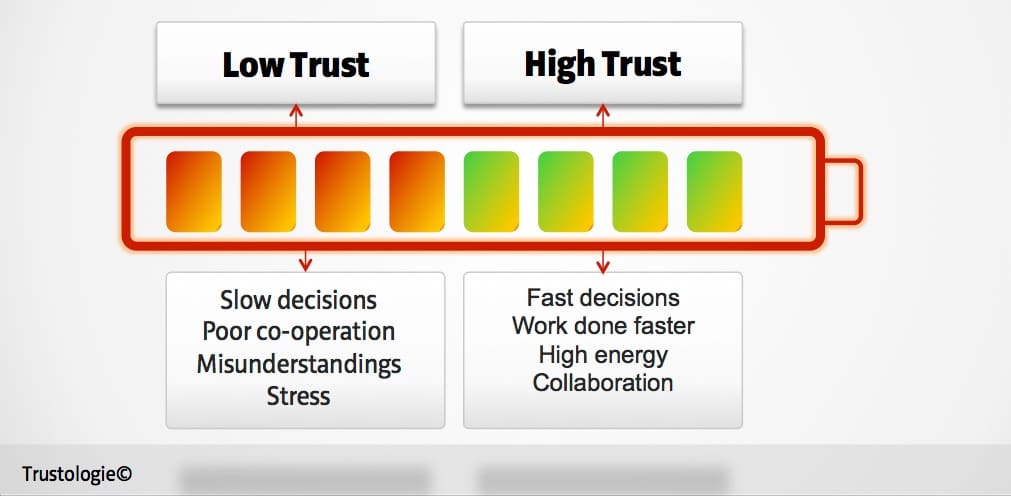
In the pressure cooker business world we live in, change and uncertainty have become commonplace. No longer can organisations rest on their laurels. Plans must be put together quickly, decisions made and deadlines met.
Access leadership and trust building communication tips to help you improve team productivity and safety.

In the pressure cooker business world we live in, change and uncertainty have become commonplace. No longer can organisations rest on their laurels. Plans must be put together quickly, decisions made and deadlines met.

A few months ago, I caught up with a CEO from a midsize firm for lunch. He was keen to tell me that people only care about money. His business that he had successfully co-founded, was built purely to enable himself, his co-founders and employees to support their families financially. He made out that was quite noble. Yet, there was no focus on how his organisation created value for their clients. The value was all inward. When I asked him what his company stood for, his brand proposition, he told me it was to enable his employees to feed their families.
Years ago, an aspiring general manager had the misguided idea that reducing biscuit purchases would enable a hospital to save around $3,000 a year. The thinking was that nurses had two biscuits during morning tea and they could change to one biscuit in the morning and one in the afternoon. Alternatively, they could just skip afternoon biscuits. After all, wasn’t it enough to just have biscuits in the morning?

Measuring and improving employee engagement is often revered as the holy grail to improving business performance. Moderate employee engagement results encourage the C-Suite to pat themselves on the back. But ask the CEO some truth-seeking questions and they confess that despite good employee engagement levels there are a few problems that are still impacting performance – employees not being fully challenged, certain leaders unable to harness the collective intelligence of their teams and frustration around constrained expansion plans.

One of the common attributes of companies that have high performance workplace cultures is that they have a clear, well-specified purpose that states both how and why the company makes a positive impact to the world. It’s their fundamental reason for existence beyond just making money.

With a rapidly changing world, the need for high-performance teams to solve difficult problems is more important than ever before. The good news is that humans are wired to want to work together on a goal that is bigger than what can be achieved individually.

Transitioning to managing a remote team when your team is normally co-located requires a steep learning curve for both team leaders and team members. Throw in the COVID-19 crisis and high levels of anxiety and trust levels in the team can come crashing down if not managed correctly.
Michael is the Group General Manager of an industrial company with a division of 250 people. Due to the company winning a new contract interstate, he has been travelling more frequently than normal over the last four months. The contract is not going well, so he is spending most of his time putting out fires.

Over the last five years, nearly every single Australian workplace has experienced significant change at some level. Whether that’s a merger, new CEO or executive team, different business model, updated premises or even redundancies.
